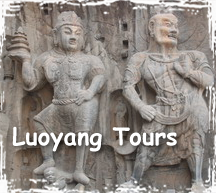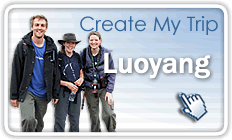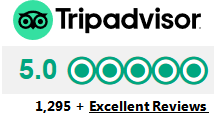Zhengzhou Shaolin Luoyang Tour ( Third Day )
On the 15th, June, we began our second day journey. There were mainly three scenic spots we visited: White Horse Temple (Baima Temple), Guanlin (The Mausoleum of Guan Yu), Longmen Grottoes, all of which are the key points of interest in Luoyang City.
As far as Luoyang is concerned, it is well-known as “the ancient capital of nine dynsties”. It is situated in the western part of Henan Province, stretching across the middle reaches of the Yellow River. With a total area of 15,208 square kilometers, the city holds a population of 6.24 million. It is one of the cities to be declared as the ancient capitals and famous historical and cultural cities. “If you want to know the rises and falls in China, please just look at the city of Luoyang”. Luoyang is one of the important birthplaces of the Chinese civilizations. Culture in Yellow River and the Luo River symbolized by the Pattern of the Yellow River and the writing of Luoyang is regarded as a key origin of the ancient Chinese civilization. The Taoism, Confucianism, Buddhism and Li School are initiated here and many Chinese descendants found their root here.
After a comfortable sleep, we got up at 8:00 and ate the breakfast in Victoria Restaurant, in Fengye International Restaurant at 8:30. The restaurant provides about 60 sits and designs with exquisite environment and unique style. It offers buffet dinner on breakfast, which is not only delicious but also rich in almentation. There are all kinds of bread, soup, porridge, pickles, and fruits, all of which are savoury. After the breakfast we arrived at White Horse Temple, the earliest Buddha temple of China. About 11:00 we got to Guanlin to have a visit of the tomb of Guan Yu with reverence. About 13:00, we took the flavorful lunch in Longmenkezhan. Then we walked to the third scenic spot-Longmen Grottoes. It was really a crowded tour. We are proud that many tourists from all parts of the world came here to visit and admire the supernatural technique of our ancestor. After the visit, Our Guide, Mr Wu showed us a auchaized street, and then recommended us some places to buy Luoyang’s Specialities and the distinctive dining street.
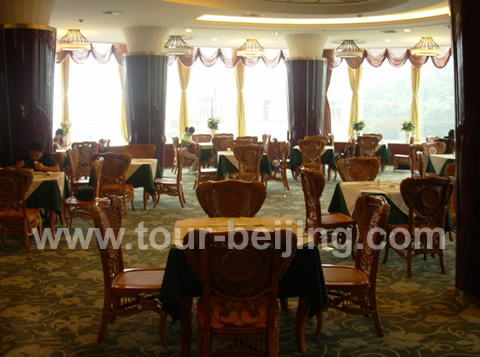
This is the restaurant we took breakfast
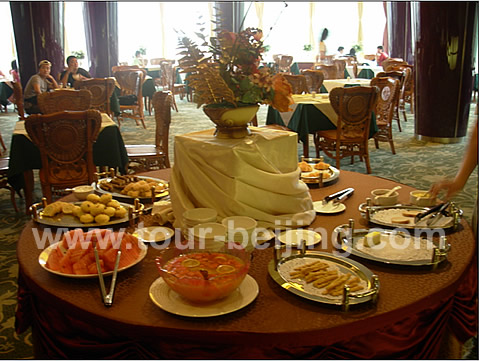
The attractive breakfast provided by the restaurant
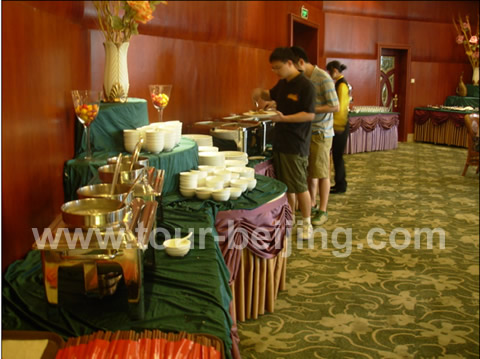
About 9:00, we stated off to the first destination: White Horse Temple (Baima Temple). White Horse Temple is 12 km away from Luoyang City. It is the first Buddhist temple built by the government in China, established by the Han Dynasty in 68 AD. There is a story about the temple got its name. Emperor Ming of Eastern Han Dynasty once dreamed of a gold man and then ordered his minister to seek Buddhist doctrines from the Western Regions. Finally, they came back with two eminent Indian dignitary Monksshe and Zhu Falan, and all of the Buddhist scriptures and status were carried back to Luoyang by a white horse In order to memorialize the white horse’s contribution of taking back the sutra, a temple name White Horse was built. The temple was regarded as the “originating court” and the “cradle of Chinese Buddhist” by the Buddhist disciples. With an area of 40,000 square meters, the temple mainly divided into Tianwang Hall, Great Buddhist Hall, Daxiong Hall, Jieyin Hall, Qingliang Terrace and Pilu Pavilion, which are all distributing along the north-south central axis.
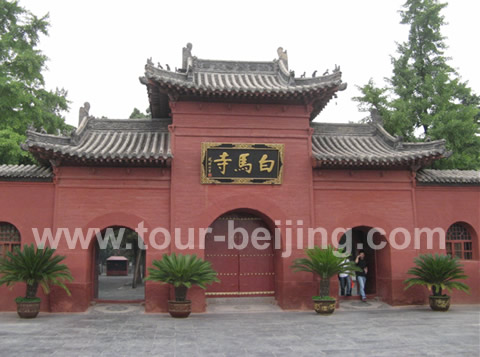
The entrance of White Horse Temple
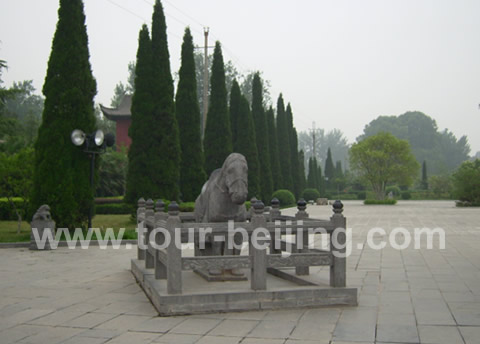
The statue of the White Horse carrying the Buddhist scriptures and status
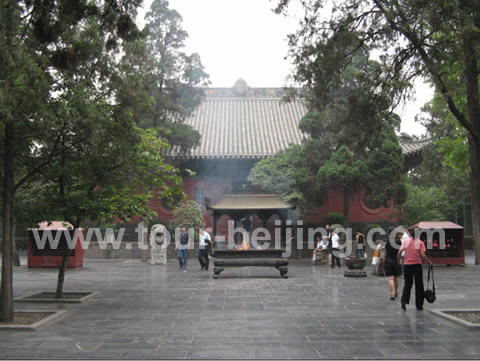
This is one of the halls in White Horse Temple. The temple and cypresses on both sides make divine atmosphere
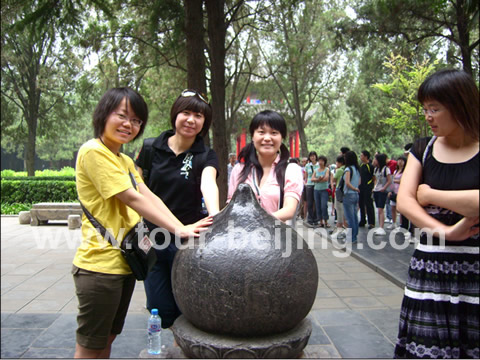
The carved stone of peach shape once was the top of one tower in the temple. It is said that if you touch it, your disease can be dispelled by it.
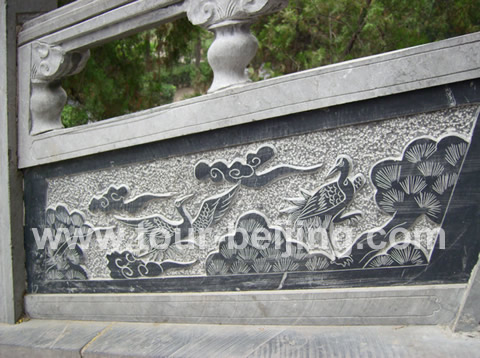
The exquisite sculpture on both sides of the baluster
About 11:00, we arrived at Guanlin, the temple of Guan Yu, which is the place buried the head of Guan Yu. Guan Yu was a famous general and Militarist of Shu Country during Three Kingdoms Period. There are only two temples named as “Lin” in China, one is Kong Lin, the temple of Kongzi and the other is Guan Lin. The term “Lin” normally refers to trees and woods, here it means the public’s respect to Guan Yu. In Taoism, Confucianism, Buddhism, Guan Yu is highly reputed as his Faithful, Brave, Humanity and Justice. Kongzi was honorific titled as “Civil Empore”, moreover Guan Yu was named “Valiant Emperor” running neck and neck with Kongzi. Guan Yu has been adored in the littoral in the eastern part of our country especially in Taiwan. There are a lot of worship of Guanyu in Janpan. Guan Lin has been existed for more than 400 years, but the tourists from home and abroad come here to make the pilgrimage in an endless stream.
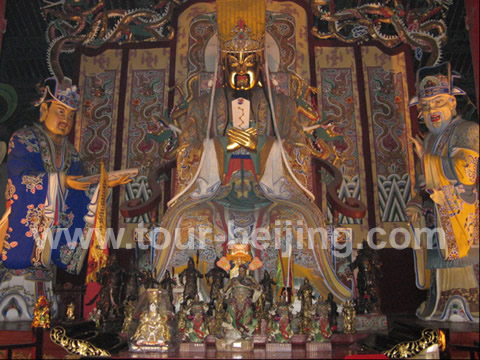
The statue in the middle is the apotheosized Guan Yu, dressed up like an emperor. There are two many small statues on his foot with different posture, different postures indicating different means.
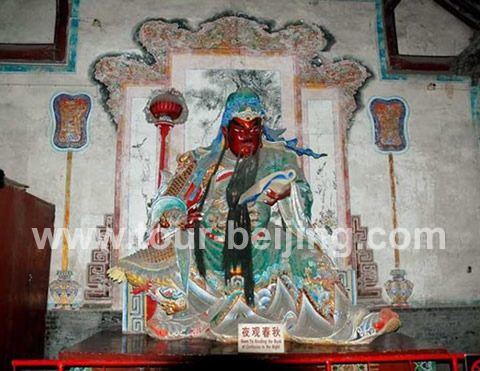
This is the picture of Guan Yu Reading
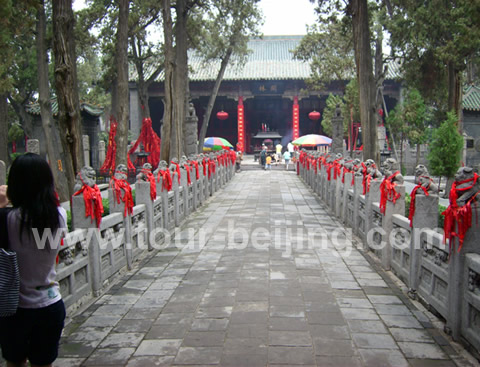
The red cloth pieces on the Stone Lions are the desirability of the public
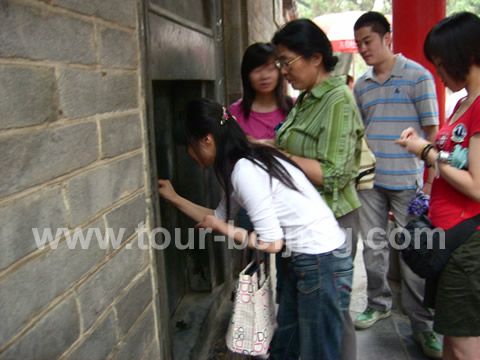
This place is called Zhonglingchu, where the head of Guan Yu was buried. There are two holes in the gate, one is on the left and the other is on the right. People throw ten coins from the holes to prey for health and wealth. If you can hear wispy clash of metal, it means your sincere and your dream can come true. When you throw the coins, please note six on left and four on right.
After the lunch in Longmenkezhan, we visited Longmen Grottoes. Located near Luoyang city, Henan Province, Longmen Grottoes are a treasure house of ancient Buddhist cave art that ran from the North Wei Dynasty (386-535AD) through the Tang Dynasty (618-907AD) and into the early Northern Song Dynasty (960-1125AD). Altogether, there are 1,352 caves, 785 niches, more than 97,000 statues of the Buddha, Bodhisativas, and Arhats, and3,680 inscribed stone tablets along the 1-km-long cliff of Mt. Longmen on the west and Mt. Xiangshan on the east of the Yi River south of Luoyang. The majority are from the Tang era, although almost a third date back to the Northern Wei.
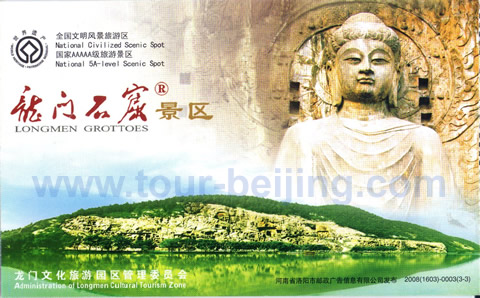
This is the ticket of Longmen Grottoes
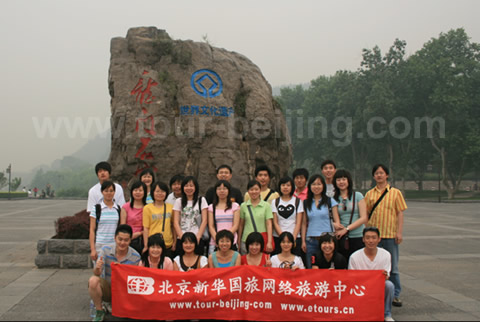
This is our group photos at the entrance of Longmen Gorttoes
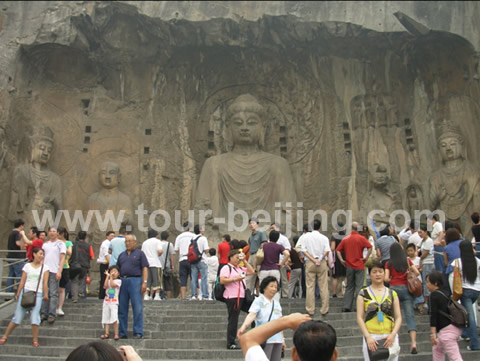
This is Fengxian Cave contains the largest status of at the site. There are seven-statue court adoming the grotto: a Buddha, two guardians and two disciples. The Grand Vairocana Buddha in the middle is the most intriguing image. About 55feet high with a 13 feet head and six foot ears, the cave is supposedly modeled on the Empress Wu Zetian, and the uniqueness of the expression combines with the statue's artistic value has led to descriptive epitaph such as "Eastern Mona Lisa" and the "Mother of China".
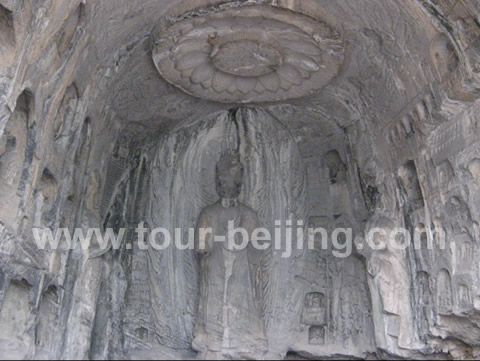
Following is the Bingyang Cave, which is the longest of the caves at Longmen Grottoes. It features a vaulted ceiling. On the ceiling carved a lotus flower cover and ten Gods waving with the wind. The two sides of the wall are large-scale basso-relievo.
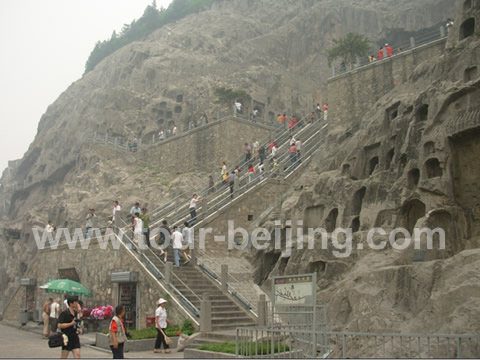
Tourists were climbing up the Longmen Grottoes
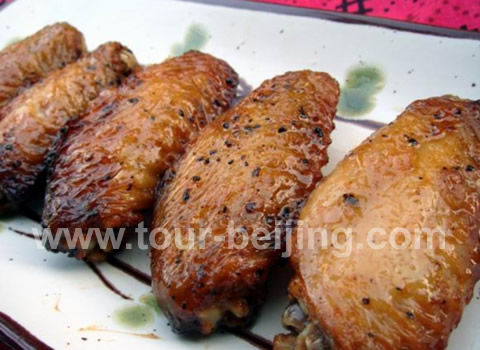
After the visit of Longmen Grottoes, we had some free time to stroll the snack street of Luoyang. Its delicious smell made us mouthwatering.
| Previous | 1 | 2 | 3 | 4 | Next |
Reservation Notes:
1. Please use our online booking or send your travel request via email to
2. Our real trip advisors will have your booking confirmed no more than one working day. When your booking is confirmed, you will get a confirmation email or call from us, which includes the confirmed detailed itinerary with prices.
3.Way of Payment
Prepayment is needed to hold your reservation. Cash payment, credit card payment or wire transfer. Both RMB and US$ or other hard currencies are acceptable.
Terms & Conditions
Questions & Answers:

